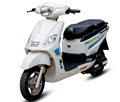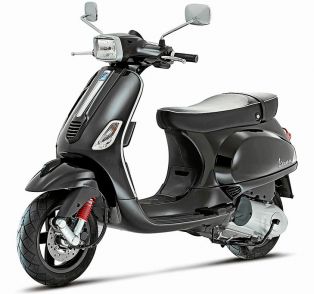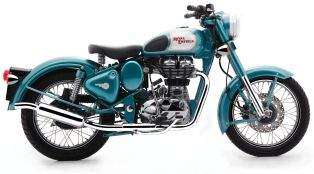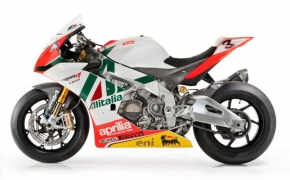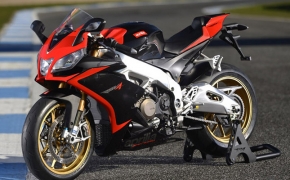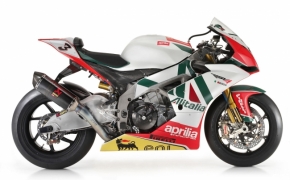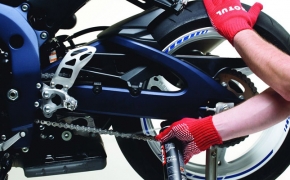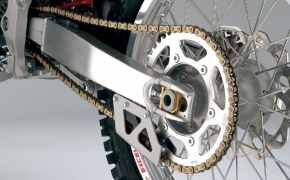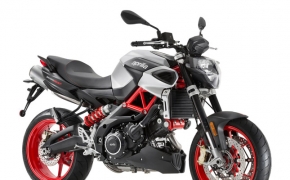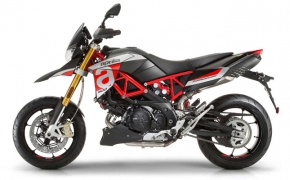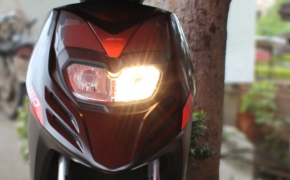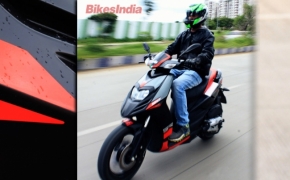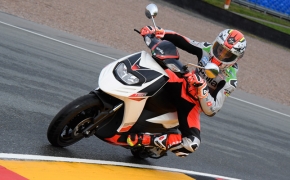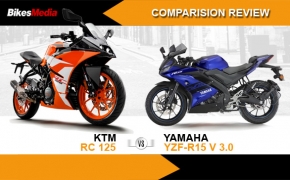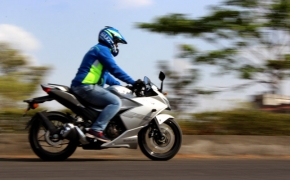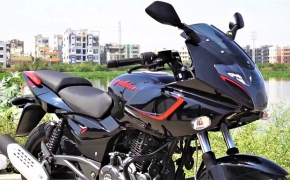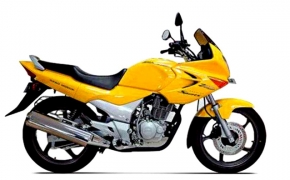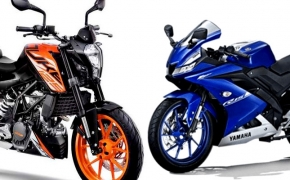Today we can see superbikes coming out with new technology loaded and among them the newest entrant in the market is Traction Control. Do not confuse ABS with Traction control as they are both absolutely different and for that very reason this article is here to make sure everyone who loves two wheels understands what traction control is, how it works and how it helps. So let’s just dive into it head on.
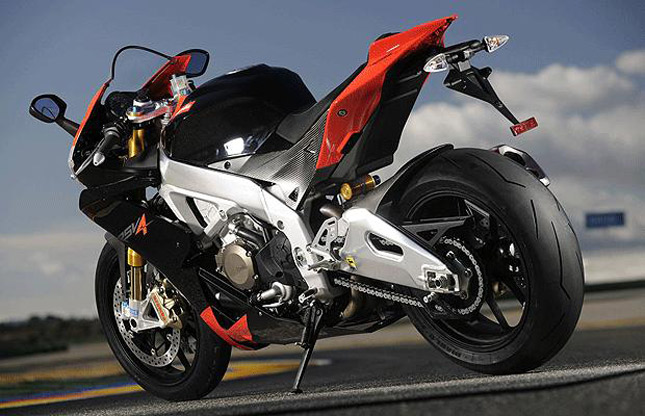 What is Traction Control?
What is Traction Control?
When you ride your bike, we all know it is the tyres that keep the bike rolling. They are the medium of contact between the bike and the road. But if you observe closely, unlike cars which have a flat tyre profile, bike tyres are curved. Now the main reason for this is to provide the bike optimum grip on leans during cornering which is not the case with cars. Hence in actual when you are riding down a straight, the contact between the road and the tyre is hardly some square inches. You will get a feeling that this is actually very less, and yes, trust us, it is very less. Hence this is not really an issue with smaller capacity bikes, but the large capacity bikes which belt out torque like a dragon breathing fire, there are chances that the wheel might run out of grip during acceleration and that means the rear wheel will end up spinning in a burnout.
Yes, burnouts are cool, but not when you want to move ahead. This especially happens during outright acceleration when the wheel speed does not quite match the friction force available on the tyre and the tyre slips. This can be a huge issue especially when it comes cornering when the bike is banking on the tyres to provide grip on the lean, the wheel speed suddenly goes up and the bike loses grip with the rear spinning like crazy. This will end up with the rubber side up and that is fatal for both the rider and the bike.
Here is where traction control comes into play. The traction control system uses sensors (generally located in the ABS rings itself else external; hence the call to not confuse this with ABS) to check out the wheel speed to the given friction rating and to check if the wheel is spinning as it should be when in contact with the road or else it is freely spinning causing a slip. So accordingly the electronic traction control sets in to make reduce the wheel spin and bring it to the optimum level so as the tyres do not lose friction and the bike stay on its path with optimum grip.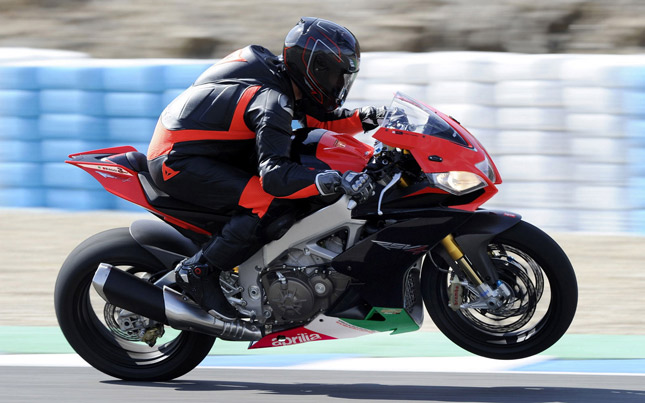 How Does Traction Control Work?
How Does Traction Control Work?
The entire basis of traction control works by checking the rear wheel spin of the motorcycles. There are many methods by which this can be done, but the most common one is to use the ABS sensors and re-purpose their readings of the wheel rotation speed to compute the data in the ECU and accordingly bring the traction control into play. Another method for getting traction control into play and this is being used by both BMW and Aprilia is to use accelerometer and a gyroscope to measure the lean angles as well so that the traction control can be controlled better.
Do note that the ECU which is the computer of the bike takes care of the entire electronics of the bike and there are TC (Traction Control) Maps loaded on the ECU so that it knows what is to be done when to keep the rubber side up.
Once the wheel speed and lean angles have all been taken into consideration, then there are three ways by which the traction control comes into effect as follows: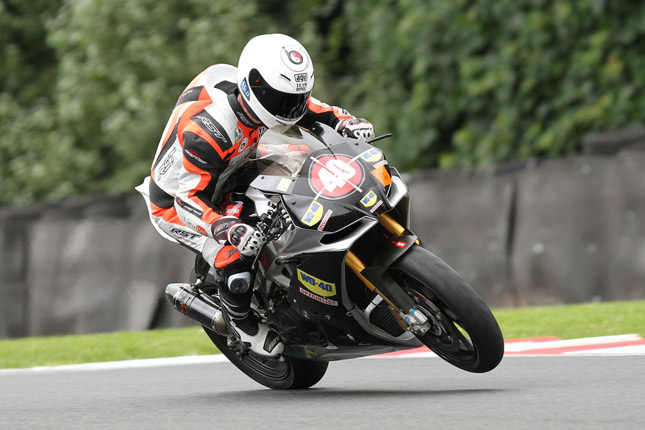 How Traction Control Help?
How Traction Control Help?
Consider you are riding a bike and you start cornering, you suddenly feel the rear wheel slipping because you may be entered the corner too fast or else accelerated too early while exiting the corner causing the rear wheel to slip and rotate which will result into you either sliding off or crashing into whatever it is in front of you as you don’t have the bike under your control anymore. In this case traction control comes into its own and one of the above mentioned methods come into action and makes the bike slow down and get its grip back so that you can then control it by your requirements and move on further.
Every bike manufacturer has their own different set of methods and algorithms. Though the basic techniques of TC is exactly the same as the three methods mentioned above, but the way the TC interferes into the ride depends on how every manufacturer has tuned the TC system to act on their bike. Some manufacturers use either of the three of maybe two out of three methods while some manufacturers use all three methods and have algorithms made accordingly. So if we consider the case of some manufacturers which have settings as to how much you want the TC system to interfere, you can actually set the levels and accordingly the required method will kick in to save your leathers from kissing the asphalt.
So this is how Traction Control works on motorcycles in the most basic way. There are other complication as well which differ from every manufacturer as to how they TC system is configured. So always make sure to ride safe so that you do not need the electronic safety net, but even if you need it, make sure to respect it for helping else you would have had been a goner by then. Ride Hard, Ride Safe and stay tuned to BikesIndia for more on two wheels.
By: Pratik Patole
 What is Traction Control?
What is Traction Control?When you ride your bike, we all know it is the tyres that keep the bike rolling. They are the medium of contact between the bike and the road. But if you observe closely, unlike cars which have a flat tyre profile, bike tyres are curved. Now the main reason for this is to provide the bike optimum grip on leans during cornering which is not the case with cars. Hence in actual when you are riding down a straight, the contact between the road and the tyre is hardly some square inches. You will get a feeling that this is actually very less, and yes, trust us, it is very less. Hence this is not really an issue with smaller capacity bikes, but the large capacity bikes which belt out torque like a dragon breathing fire, there are chances that the wheel might run out of grip during acceleration and that means the rear wheel will end up spinning in a burnout.
Yes, burnouts are cool, but not when you want to move ahead. This especially happens during outright acceleration when the wheel speed does not quite match the friction force available on the tyre and the tyre slips. This can be a huge issue especially when it comes cornering when the bike is banking on the tyres to provide grip on the lean, the wheel speed suddenly goes up and the bike loses grip with the rear spinning like crazy. This will end up with the rubber side up and that is fatal for both the rider and the bike.
Here is where traction control comes into play. The traction control system uses sensors (generally located in the ABS rings itself else external; hence the call to not confuse this with ABS) to check out the wheel speed to the given friction rating and to check if the wheel is spinning as it should be when in contact with the road or else it is freely spinning causing a slip. So accordingly the electronic traction control sets in to make reduce the wheel spin and bring it to the optimum level so as the tyres do not lose friction and the bike stay on its path with optimum grip.
 How Does Traction Control Work?
How Does Traction Control Work?The entire basis of traction control works by checking the rear wheel spin of the motorcycles. There are many methods by which this can be done, but the most common one is to use the ABS sensors and re-purpose their readings of the wheel rotation speed to compute the data in the ECU and accordingly bring the traction control into play. Another method for getting traction control into play and this is being used by both BMW and Aprilia is to use accelerometer and a gyroscope to measure the lean angles as well so that the traction control can be controlled better.
Do note that the ECU which is the computer of the bike takes care of the entire electronics of the bike and there are TC (Traction Control) Maps loaded on the ECU so that it knows what is to be done when to keep the rubber side up.
Once the wheel speed and lean angles have all been taken into consideration, then there are three ways by which the traction control comes into effect as follows:
Cylinder Drop: And by this we do not mean the cylinder is dropped down. But jokes apart, here the engines being multi-cylinder ones, there is a drop in one cylinder; which means the fuel injection to one of the cylinders is stopped causing a drop in the torque figure and that allows the wheel to slow down on its own causing it to comes back within graspable range and this allows the bike to regain control. The torque drop here depends on the engine, so if it is a 3 cylinder engine, then a single cylinder drop will result in a 30-35% drop in torque. As for a 4 cylinder engine, the drop is 25%
Ignition Retard: This is another method to drop the torque used by motorcycle manufacturers. When the bike loses grip and traction control kicks in causing the ignition to fail. This results in a torque drop, though it is immediate, the drop is hardly 20%, but it still does account to something. The problem with Ignition retard is that it ends up flooding the combustion chamber and hence causes incomplete combustion sometimes.
Closing of Throttle: This is something which is followed by riders with non-traction control bikes when they feel like they are losing grip. With modern motorcycles which are equipped with the ride by wire technology, this is possible since the gas control is done via the ECU and is electronically controlled. Hence the bike’s gas flow can be electronically stopped causing the engines to not fire at all resulting in a drop in the torque and hence the bike coming back into its terms.
Ignition Retard: This is another method to drop the torque used by motorcycle manufacturers. When the bike loses grip and traction control kicks in causing the ignition to fail. This results in a torque drop, though it is immediate, the drop is hardly 20%, but it still does account to something. The problem with Ignition retard is that it ends up flooding the combustion chamber and hence causes incomplete combustion sometimes.
Closing of Throttle: This is something which is followed by riders with non-traction control bikes when they feel like they are losing grip. With modern motorcycles which are equipped with the ride by wire technology, this is possible since the gas control is done via the ECU and is electronically controlled. Hence the bike’s gas flow can be electronically stopped causing the engines to not fire at all resulting in a drop in the torque and hence the bike coming back into its terms.
 How Traction Control Help?
How Traction Control Help?Consider you are riding a bike and you start cornering, you suddenly feel the rear wheel slipping because you may be entered the corner too fast or else accelerated too early while exiting the corner causing the rear wheel to slip and rotate which will result into you either sliding off or crashing into whatever it is in front of you as you don’t have the bike under your control anymore. In this case traction control comes into its own and one of the above mentioned methods come into action and makes the bike slow down and get its grip back so that you can then control it by your requirements and move on further.
Every bike manufacturer has their own different set of methods and algorithms. Though the basic techniques of TC is exactly the same as the three methods mentioned above, but the way the TC interferes into the ride depends on how every manufacturer has tuned the TC system to act on their bike. Some manufacturers use either of the three of maybe two out of three methods while some manufacturers use all three methods and have algorithms made accordingly. So if we consider the case of some manufacturers which have settings as to how much you want the TC system to interfere, you can actually set the levels and accordingly the required method will kick in to save your leathers from kissing the asphalt.
So this is how Traction Control works on motorcycles in the most basic way. There are other complication as well which differ from every manufacturer as to how they TC system is configured. So always make sure to ride safe so that you do not need the electronic safety net, but even if you need it, make sure to respect it for helping else you would have had been a goner by then. Ride Hard, Ride Safe and stay tuned to BikesIndia for more on two wheels.
By: Pratik Patole





